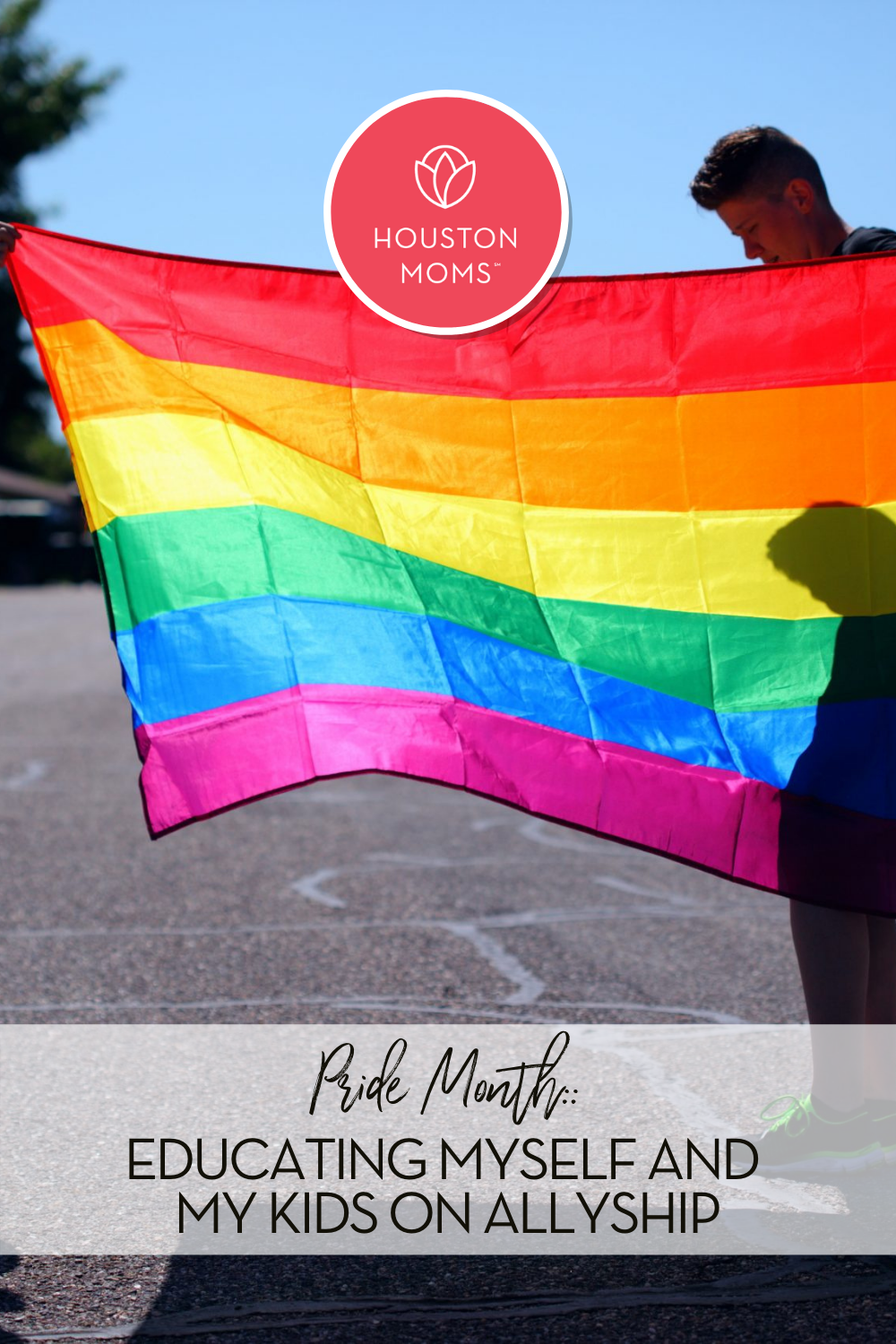It’s Pride Month and we are celebrating and honoring the LGBTQ+ community. Over the past couple of years, as I’ve wrestled with the beliefs I grew up with, I’ve learned a lot that I never knew about LGBTQ+ people and the history surrounding Pride Month. I’m learning what it means to be an ally. I’m reading stories, watching documentaries, and asking questions about what life is like for my friends in the community. I’m learning new words that express gender diversity and expression, including the pejorative history behind the term Queer and how it’s now is being reclaimed in a liberating way. I’m also learning about how to teach all of this to my own children!
A Quick History Lesson On Pride Month
The June 1969 Stonewall Riot is marked by many as the beginning of the Pride movement when the patrons of the Stonewall Inn fought back against a routine police raid. At that time, people could be arrested for “homosexual activity” and for cross-dressing. The events at Stonewall that night sparked a national outcry. The movement, led mostly by queer and trans people of color, brought the LGBTQ+ community’s stories into the foreground for the first time. The movement grew and annual protests were organized.
We are now living in a time when the visibility of the LGBTQ+ community is at an all-time high in our country. Rainbow graphics have become a part of the marketing campaigns in June for several big companies and you can even purchase pride month gear at Target (I did!). However, even with this level of visibility and catchy PR, there is still so much pain, suffering, and discrimination that occurs individually and on a systemic level. For example, until the Supreme Court ruling just last year, 27 states still allowed employees to fire someone for their sexual orientation or gender expression. Many churches are non-affirming, meaning people who identify as LGBTQ+ cannot join, volunteer, or be ordained. There is still incredible misunderstanding about Trans people, as evidenced by the new wave of legislation we recently saw across the country attempting to ban Trans kids from youth sports. I’m sure many of us know the stories of LGBTQ+ people who have been rejected by their own families. Not unrelated to all of this rejection and pain, there are also much higher rates of depression and suicide among LGBTQ+ people.
Let’s Talk About It
For all of these reasons and more, it is imperative to me as a straight ally to educate myself and celebrate Pride Month, demonstrating my unwavering support and teaching my children what it means to be an ally. For one thing, my kids may very well discover one day that they belong to the LGBTQ+ community! They will most certainly have friends that do. I am determined they will feel nothing but unwavering love and support from my home. Period. That starts with how we talk about Pride Month and how I talk to my kids now about what it means to be a lesbian, gay, bisexual, trans, or non-binary.
It requires openness on my part to learning new terminology, having understanding for something I have never experienced, and above all, loving people for who they are.
So in our household, this looks like actually talking about it! We talk about what LGBTQ+ means. We’ve asked our kids if they know anyone who is queer at school. Turns out, they do! We remind them to be intentionally kind and inclusive. We remind them that whoever they have crushes on or grow up to love is just fine with us. We model this acceptance in our own adult friendships. Even if we think of ourselves as open, inclusive, and loving- it may not translate to what our kids are actually learning unless we are very clear with them about what we believe. We seek out books, movies, and shows that normalize LGBTQ+ characters and relationships. The book Drama by Raina Telgemeier, the movie The Prom, and The Babysitters Club series on Netflix all come to mind for my preteens. For younger kids, here are a few books that teach kids about gender diversity and expression: When Aiden Became a Brother by Kyle Lukoff; It Feels Good to Be Yourself: A Book About Gender Identity by Theresa Thorn; and Mary Wears What She Wants by Keith Negley.
Free from Fear & Shame
So, why pride? Why celebrate and gear up rather than just quietly accept? This is about visibility, safety, and normalization. For so long (and still today) LGBTQ+ people have been told that their sexuality was something to be ashamed of. That it was something to hide. Living openly meant not only discrimination and exclusion but in many cases actual real danger- verbal aggression and even violent attacks and death from just simply holding hands and/or kissing their partner in public. So this isn’t about pushing a political agenda. It’s about freedom from violence, shame, and danger. Pride is about creating a safe and accepting space for those who have been told they needed to be afraid and ashamed.
So, when I wear my “Ally” shirt this month, I’ll definitely be thinking of and supporting my friends who are Queer. But I’ll also be thinking about people around me who aren’t out- perhaps some of my own loved ones or my kids’ friends. I want them to know unequivocally that my family will always be a safe space. I want them to feel affirmed, included, and safe, in however they choose to express their love or gender identity. I also want to continue to learn, listen, and seek to understand.
Let’s be a tangible part of the affirmation, liberation, and love of others while lighting the way for the next generation to do the same. 
If you’re interested in learning more, here are some great resources for both parents and kids on growing in awareness and becoming an ally:
Guide to Being an Ally to Transgender and Nonbinary Youth
Trevor Project Resource Page
Resources from the CDC

















